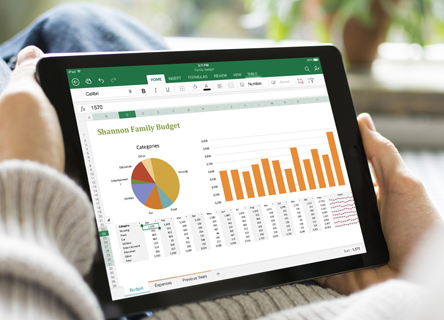In the present day and age, businesses have found new meaning for their data and are aspiring to achieve new horizons by utilizing its full potential. Businesses are now operating on various channels that open the many gateways for data inflow. The fact that massive volumes of data are being created every day emphasizes the need for efficient and effective tools for quick and reliable processing of this data.
With these gigantic datasets, available companies need to find ways to transform it into information and derive valuable insight from it. The transition of data-driven business is recent. According to Forbes, 90% of the digital insight world-wide is generated only in the last two years.
Proper utilization of data can result in enhanced operational efficiency, increased profitability, greater business intelligence, and overall business growth. The exponential growth in the rate of availability of data enforces the need for the selection of optimal tools and teaming with an efficient solution provider.
Glorious Insight provides an integrated solution for data analytics and business intelligence with the best-in-class tools for segregation, curation, and scrutiny of the data. Our solutions can discover new problem areas and rising questions and provide the answers to them using Ad Hoc reporting and analysis.
√ Understanding Ad Hoc reporting
Some business processes are fast-paced and need a similar kind of response to the related issues. Ad Hoc reporting is a way to ditch the standard reporting procedures for these fast processes. Ad Hoc reports are generated to find immediate answers to the critical questions by leveraging real-time data analytics and dynamic dashboards. In simple words, Ad Hoc reports are the ones that are generated on the fly with real-time data to make quick and profitable decisions.
By combining the insight from daily, weekly, and monthly reports with the Ad Hoc reports you can acquire an unparalleled understanding of business decisions that ensure sustainability and organizational and brand growth. These reports are the fuel that powers the data-driven decision making, adding deeper insight and substance to routine documentation.
Normally, these kinds of reports are developed by the IT team using SQL and take multiple days to see the light of day. Glorious Insight brings this valuable insight to your disposal in almost no time and without the need of burdening the IT team. We implement data analytics tools that can filter, process, and convert data into insight in nearly real-time.
We ensure enhanced decision-making using our dynamic, interactive, and user-friendly dashboards for business intelligence at various levels allowing even the non-technical staff to create and utilize Ad Hoc reports. We also provide exceptional data visualization for better exploration of data and Ad Hoc reports without the need for any technical expertise.
√ A look at Ad Hoc analysis
Often running processes bring to light some standalone business challenges and specific questions. Special business intelligence is needed to answer these challenges and questions that can process massive data and create insight into the spot without the expertise of IT staff. This is what Ad Hoc analysis serves.
Ad Hoc analytics often dig deeper into the existing reports on your dashboard to uncover profound and intriguing insights for business sustainability and continuous progress. Ad Hoc data analysis is exploring and studying the Ad Hoc reports to extract tangible conclusions and initiate appropriate action immediately for process improvement and better outcomes.
A typical Ad Hoc report serves the decision making purpose for a smaller or more compact audience. It is developed with the help of routine reports pertaining to a specific task within the major business processes. The report is created with more detailed and dynamic visuals as compared to the regular static reports.
Glorious Insight understands the absence of big data analytics can leave you deaf and blind on a busy and fast-paced roadway. We create an effective database management system to manage the vast variety of data from all different sources. Our proficient team works with your staff and consultants to develop Ad Hoc reporting systems for critical business processes to unearth more detailed analytics that cannot even be thought of otherwise.
√ Advantages you can draw from Ad Hoc reporting and analysis
Ad Hoc reports and Ad Hoc analysis gives new dimensions to data-driven decision-making. It can dramatically speed up the decision-making by proving an unmatched insight into the data and processes in real-time. Here some compelling benefits you can draw from Ad Hoc reporting and analysis.
• Reduced dependency on IT-team
Ad Hoc reports make the end-user and non-technical staff self-sufficient. You do not need technical expertise to work on these reports. This reduces the dependency on the IT staff and frees them to focus on domain-specific tasks.
• Usage simplicity
Ad Hoc reporting tools provided by Glorious Insight are highly visual and intuitive. These are created with customized user-friendly dashboards that make analytics, insight deduction and reporting easy like never before.
• Provide unparalleled flexibility to cope with changing business environment
One of the best tools to accommodate changing requirements and expectations of the dynamic businesses is Ad Hoc data analysis. These come with interactive interfaces that allow you to ask questions and pick the most suitable elements to customize the analysis to meet the current requirements and business goals.
• Time and cost-effectiveness
This kind of analytics is created with the aim of enabling self-service BI. Users can create reports in no time that would otherwise have taken several hours of specially skilled staff. Quick reports also allow users to take immediate action for modifying and enhancing processes. It creates a data-driven system that saves a significant amount of time and money.
√ Prominent use cases
There is no denial from the value that the Ad Hoc reporting adds to every organization regardless of its industry and sector. By leveraging the power of enterprise data and regular reports, it unleashes hidden insight and provides exceptional business intelligence that drives profitability. Its simplicity enables self-service BI thereby liberating the technical staff for more productive innovations that can further add to the progress of the business. Here are some use cases where you can clearly see the magic of Ad Hoc analysis.
• Finance
The finance department, by its crude nature, deals with facts, figures, metrics, KPIs, and other forms of data. Ad Hoc analysis enables businesses to dig deep and reach the hidden concentrated data segments. This helps in predicting trends that are most likely to provide greater ROI. Along with business intelligence dashboards, it provides you apparent and immediate improvements in key business areas for better allocation of money and fruitful delegation of other resources.
• Sales
Ad Hoc analysis can do wonders for companies having a large sales database and a huge outside-sales force. It allows you to analyze sales data related to a particular scenario. Executives can create immediate reports regarding parameters like the number of visitors, lead generation, etc. This helps in taking quick actions to identify weak-spots and improve the numbers to meet the overall sales objectives of the company.
• Retail
The most prominent use of Ad Hoc reporting in sales is in loss prevention. For instance, retailers can create on the fly retail analytics reports for specific stores. This helps them to identify loss-making activities such as shoplifting and employee theft. By tracking inventory in such cases and discovering the trends, you can save large amounts in the long run.
• Recruitment
Applying Ad Hoc analysis in recruitment analytics can help the companies to spot the deficiencies in their workforces and pick the cream talent from the market. It also helps you to deliver better employee satisfaction and achieve higher retention. You can assess the prominent recruitment metrics to identify weaker team members, identify the reason for lower performance, and take immediate measures to enhance productivity. It helps in finding glitches in human resources and keeping the projects on track.




